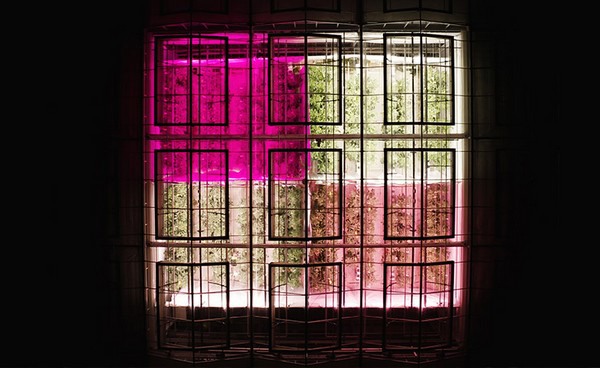The results from a series of multiyear global studies analyzing the effects of broad-spectrum white light on cannabis, Merlice tomatoes and bell peppers were announced this week by Fluence.
Recent studies found that while spectrum sensitivity is cultivar-dependent, broad-spectrum lighting strategies—which include green light and other wavelengths largely absent in narrow-band spectra—improved crop yield, morphology and overall performance in selected cultivars when compared to narrow-band spectra with high ratios of red and far-red wavelengths.
“The results from our global studies show how effective broad-spectrum white light can be in improving crop performance for many cultivators around the world,” said Dr. David Hawley, principal scientist at Fluence. “Broad-spectrum strategies are about balance and flexibility in the spectrum itself as well as the overall cultivation approach. While there are certain scenarios in which narrow-band spectra, or pink light, may make sense from an energy efficiency or crop production perspective, we’ve found that many cultivars simply perform better under broad spectra across the KPIs cultivators care about most: yield, morphology and overall quality. Our latest research empowers us with new insights to assess each grower’s objectives, weigh those objectives against a facility’s unique financial, environmental and energy parameters, and then ultimately derive a tailored solution for each cultivator.”

Merlice tomatoes
A collaborative study with Wageningen University and Research (WUR)—led by researchers Leo Marcelis and Ep Heuvelink—evaluated differences in yield, morphology, development and quality for Merlice tomatoes grown with the VYPR top light series under four light spectra: PhysioSpecTM BROAD R4, PhysioSpecTM BROAD R6, PhysioSpecTM BROAD R8 and PhysioSpecTM DUAL R9B. BROAD R4, R6 and R8 all contain significant fractions of green light and other photosynthetically active wavelengths, while DUAL R9B is a narrow-band spectrum that contains almost no green light.
As researchers increased the ratio of red light in the overall spectrum, they recorded a linear decrease in yield. Compared to spectra with higher blue, red and far-red wavelengths, Merlice grown under broader spectrum lights yielded increases in fruit weight as high as 13 percent. Other tomato cultivars grown under broad-spectrum saw yield increases up to 14 percent.
Cannabis
Fluence conducted individual studies with WUR and Texas Original Compassionate Cultivation (TOCC), respectively. In the TOCC study, researchers studied Type I, Type II and Type III cannabis response to broad-spectrum R4, R6 and R8 under high PPFD. In each case, broad-spectrum R4 generated the most dry weight per plant. In Type I cannabis, PhysioSpecTM BROAD R4 generated 17 percent higher yields than the next highest yielding spectral solution, R6. Cannabis grown under broad-spectrum R4 also significantly improved morphology compared to plants cultivated under R6 or R8. Plants grown under broad-spectrum R4 were free of photobleaching in their upper buds, a development that typically occurs in plants grown with a higher fraction of red light.
In the WUR study, researchers found that in some cultivars, monoterpene and cannabinoid content, including THC, CBD and CBG, is significantly inversely proportional to the fraction of red light in the production spectrum. With these cultivars, R4 induced a 20 percent increase in cannabinoid compounds compared to spectra with red light ratios as high as 90 percent or more.
“The results of the TOCC and WUR intensity and spectrum studies are important for cannabis cultivators for two reasons,” Dr. Hawley said. “First, there is rarely a scenario in which they should grow cannabis under low PPFD. Our research continues to emphasize how much more beneficial it is to grow cannabis under higher PPFDs. Second, watch your red light ratio. There are a couple very specific cultivars and production situations that could benefit from narrow-band or high red/far-red and blue wavelengths. But it can also have detrimental effects on cannabinoid content, terpene ratios, yield and morphology, and would raise the risk of significant photobleaching of the canopy. That’s why we generally recommend growing cannabis with broad-spectrum under high PPFD.”
Bell pepper
Fluence also conducted studies with bell peppers at the Harrow Research and Development Centre in Ontario, Canada led by Dr. Xiuming Hao and Dr. Jason Lanoue. The collaborative research on bell pepper found that fruit quality significantly increased in Gina and Eurix cultivars under broad-spectrum lighting. Peppers grown under broader spectrum light increased average fruit size by up to 15 percent compared to others with higher blue and red wavelengths. An increase in the dry matter content—which is largely associated with fruit quality—also increased with increasing green light. It was also found that broad-spectrum lighting strategies proved the consistency of week-to-week production by leveling out a traditionally flush-prone crop cycle.
For more information: Fluence
Fluence
www.fluence.science
